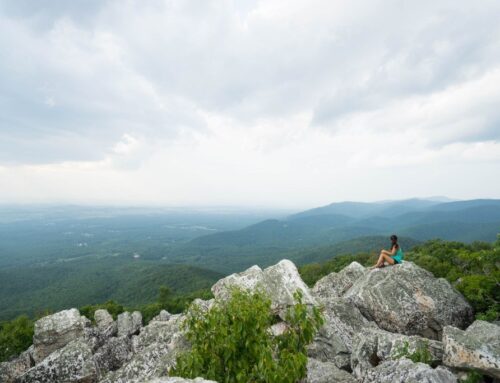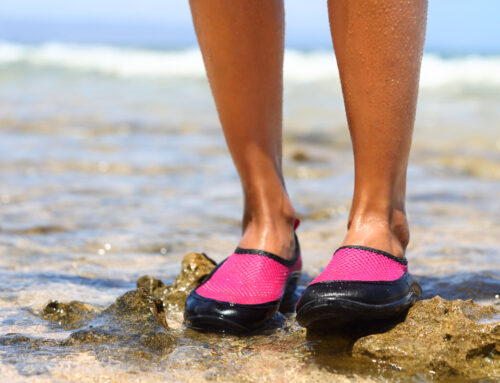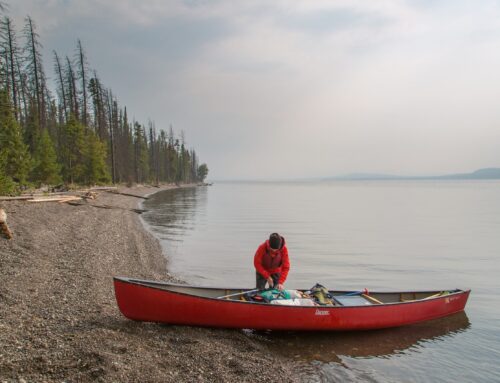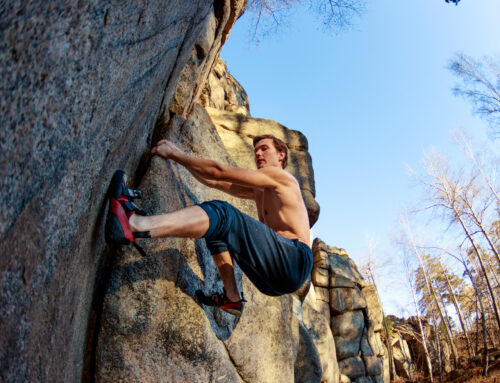Updated November 21, 2022
There are few things hikers dread more than a painful blister on the trail. While modern sock designs and materials help alleviate the issues that contribute to blisters – excess moisture, bumps and knots, and skin chafing – sometimes this isn’t enough for the most blister-prone hikers. Sock liners are a simple and effective option for blister prevention that many hikers swear by. We created this guide to the best hiking sock liners that you can pair with socks for comfortable, blister-free hiking.
Want more hiking gear?
- What to Wear Hiking: Best All Season Hiking Clothes for Women & Men
- The Complete Day Hiking Packing List: Essential Gear for Every Hike
- Best Trekking Poles to Help You Tackle the Toughest Trails
- Best Hiking Pants for Women for Comfort on Every Trail
- Best Hiking Pants for Men for Comfort on Every Trail
What are Sock Liners?
Sock liners are exactly what they sound like: a thin, breathable sock worn underneath lightweight, midweight, or heavy weight hiking socks. These are usually made of breathable, moisture-wicking fabric that provides extra comfort while hiking long distances. Sock liners can reduce sweat and moisture, provide additional warmth, and offer additional cushioning underneath your main hiking socks.
Why Should I Wear a Sock Liner?
Whether you choose to wear a sock liner is a personal decision, but they can help you feel drier and more comfortable on the trails. Hikers typically wear sock liners for a few reasons:
- Blister prevention: Sock liners can help mitigate the formation of blisters by wicking moisture and reducing chafing and friction in areas where the foot comes in close contact with your boots like the toes and heels. Moisture softens the skin on your foot, making it more prone to painful blisters. The best liners for blister prevention are made from comfortable, moisture-wicking fabrics.
- Warmth: Certain types of sock liners can provide an additional thermal layer underneath hiking socks during cold weather hikes. These thermal liners can keep your feet dry and warm in icy, frigid temperatures.
- Extra cushion & comfort: While most hiking socks are designed to be super comfortable, some hikers do prefer to bring a pair of sock liners along for extra comfort and cushioning on multi-day hikes or backpacking trips.
Choosing the Best Hiking Sock Liners
Hiking socks are kind of like an invisible force – the best ones are the ones you never have to think about. If a pair of socks is painful, irritating, or constantly damp, it becomes an annoyance and hazard on the trails. On the other hand, if your hiking socks are dry, warm, and comfortable, you won’t think twice about how you feet feel on your hike. With that said, there are a few main factors that contribute to a sock’s comfort and performance in most trail conditions. Each of these criteria factored into our evaluation of the socks in this guide (and should factor into your purchasing decisions, too!).
Materials & Weight
What a liner is made of is the #1 most important aspect to consider when choosing a pair. The best hiking sock liners should be made of very lightweight, moisture-wicking fabrics. Fabrics like cotton are a no-go for hiking sock liners because they promote moisture buildup which can cause chafing and blisters.
Instead, opt for moisture-wicking, breathable fabrics like the following:
- Merino wool (our favorite)
- Silk
- Polypropylene
- Nylon
- Polyester
- Spandex
When you wear the sock liner, it shouldn’t add much additional bulk to your foot. Instead, the liner should fit line a glove inside the sock and the two should hug your foot seamlessly, without lumps or wrinkles. Some people prefer the feel of certain fabrics more than others, so we’d recommend trying out a few different materials before deciding.
Design, Length & Comfort
Next, you’ll want to consider the sock design. While it might seem to make sense to purchase hiking sock liners that are shorter than your socks, this can pose annoying issues later if you need to adjust the liners. Because of this, we actually recommend purchasing liners that are the same length or slightly longer than your socks so you can adjust them on the move.
Additionally, you’ll want to avoid sock liners with too many obvious seams or other bumps that can rub against your skin. The simpler the sock liner, the better!
The sock liners should feel lightweight and comfortable on your feet. The last thing you want is something that’s itchy, uneven, or uncomfortable in any way. The best hiking sock liners you can put on and forget about!
Durability
Lastly, you’ll want to consider durability. This is fairly self-explanatory, but your sock liners should be durable for those tough hikes and miles of trail. Choosing a sock liner company that provides a lifetime guarantee (or at least one that lasts several years) is a great way to ensure you’ll always have a pair on hand – and the company will replace any products that don’t meet your expectations.
Make sure you have a good pair of socks to go along with your sock liners! Check out our complete guide to the best hiking socks here:

Best Hiking Sock Liners for Any Adventure
Injinji Liner Crew
Overall Best Hiking Sock Liners – Tie
- Materials: 75% COOLMAX, 21% Nylon, 4% Spandex
- Why It’s Awesome: Toe sock construction offers additional protection against blisters, liners are thin and ultra lightweight
When I first heard about toe socks for hiking and running, I scoffed and said, “yeah right.” But before I knocked Injinji’s toe socks completely off my radar, I decided to give them a whirl on a few hikes. Needless to say, after trying out these unique hiking socks, I was hooked.
That’s why we think the Injinji Liner Crew socks are the absolute best out there for moisture reduction and blister prevention. With your toes separated by the COOLMAX fabric blend, these liners are even more effective than normal socks at ensuring your feet stay dry, chafe-free, and comfortable. Blister prevention isn’t the only pro of these toe sock liners – Injinji claims its socks offer a whole host of benefits, like better foot utilization.
While we were pleasantly surprised by the toe sock design, it’s not for everyone. Some people may find that the liners feel strange on their feet or are difficult to put on, especially in humid or wet conditions. That’s why the Injinji tied for Best Overall with the REI Silk Sock Liners (below). However, if you haven’t hiked in toe socks before, we’d recommend giving them a try!
CHECK REVIEWS & PRICES FOR INJINJI LINER CREW:
REI Silk Liner Crew
Overall Best Hiking Sock Liners – Tie
- Materials: 51% Silk, 47% Nylon, 2% Spandex
- Why It’s Awesome: Ultra lightweight, excellent moisture-wicking properties
For a thin, sturdy, moisture-wicking sock liner, the REI Silk Crew Liners is our other pick for the best hiking sock liners. It’s not common to find silk in outdoor gear because it has a reputation for being fragile, but the silk blend found in these REI’s liners makes them considerably more lightweight than other blends made from wool or nylon.
We love these because they fit into our hiking socks effortlessly, and the thin but sturdy construction doesn’t add extra bulk to our feet. The silk and nylon blend wicks moisture really well, minimizing the risk of moisture buildup, chafing, and blisters. At less than $15, these liners won’t break the bank and are backed by REI’s 1-year quality guarantee.
While most customers don’t have any problems with durability, there have been some reports that these silk sock liners are less durable than nylon or wool liners. In our view, this is a trade off we’re willing to make because they’re thinner and more breathable under our socks, but you’ll have to decide for yourself. Overall, these sock liners are our favorites and make a fantastic companion to any pair of your favorite hiking socks.
CHECK REVIEWS & PRICES FOR REI SILK LINER CREW:
Wrightsock Adventure Crew Hiking Socks
Best Hiking Socks With Built In Liners
- Materials: 78% Polyester, 16% Nylon, 6% Spandex
- Why It’s Awesome: Hiking socks with built in liners combine the best of both worlds
Why have separate liners and socks when you can get both in one product? The Wrightsock Adventure Crew Hiking Socks are dual-layer hiking socks with built in, moisture-wicking liners that were designed specifically to prevent blisters and chafing on the trails. All of Wrightsock’s products boast blister prevention qualities, and these socks – created specifically for tough hikes and backpacking trips – are a fantastic option if you’re looking for a built-in liner. Many customers rave about the comfort and warmth provided by these socks, and we think they’re especially great for those who prefer plush socks to hike in.
While the socks are great, reviewers say that Wrightsock’s customer service is not. Multiple people expressed dissatisfaction about not receiving orders for weeks and receiving no assistance from the company. While this is usually a deal breaker for us, the fact that you can order from REI and Amazon (and receive shipments from them directly) makes us feel a little better about recommending them. Proceed with caution!
CHECK REVIEWS & PRICES FOR WRIGHTSOCK ADVENTURE CREW:
Want a good pair of shoes to go with your sock liners? We’ve got you covered with our guides to the best hiking boots:
Icebreaker Liner Crew
Best for Cold Weather
- Materials: 55% Merino wool, 43% Nylon, 2% Spandex
- Why It’s Awesome: Merino wool blend effectively manages moisture and odor in all temperatures, soft and comfortable for long hikes
One of our favorite all-season hiking sock liners is the Icebreaker Liner Crew. Made of Merino wool, these super breathable sock liners perform well in hot weather as well as colder climates. The soft, sturdy fabric blend helps to wick sweat and moisture, while also managing odors for hours on end. While you can use these year-round, they’re the best on our list for cold temperatures because the wool provides additional warmth that the other products on our list do not.
A few users have complained of durability issues with the Icebreaker liners, but they’re covered under the lifetime sock guarantee, so you can always request a replacement if yours wear out.
CHECK REVIEWS & PRICES FOR ICEBREAKER LINER CREW:
Fox River X-Static Ultra Lightweight Crew Liner
Honorable Mention
- Materials: 60% Polypropylene, 20% Nylon, 19% X-Static nylon, 1% Spandex
- Why It’s Awesome: Silver coated nylon provides extra temperature regulation
Created to be extra effective at moisture and odor reduction, the Fox River X-Static Ultra Lightweight Crew Liners are many hikers’ go-to sock liners. Using a polypropylene fabric blend, these ultra thin socks will help your feet stay super dry in your hiking socks. Many people love the feel of these liners with and without hiking socks on top.
One of the biggest drawbacks of these sock liners, in our opinion, is the fact that you have to hand wash them. As active hikers, we don’t always have the time to hand wash (and dry) our gear, so this added step feels irritating and time-consuming. Additionally, reviewers have complained that these socks are not durable and can wear out quickly if you hike too hard in them. Because of this, our preference for sock liners lies elsewhere, but these are a great, super light option.
CHECK REVIEWS & PRICES FOR FOX RIVER X-STATIC CREW LINER:
Wigwam COOLMAX Liner
Honorable Mention
- Materials: 62% Coolmax, 37% Stretch Nylon, 1% Spandex
- Why It’s Awesome: Least expensive of all liners on our list, Coolmax fabric helps with temperature regulation
For budget-conscious hikers, the Wigwam COOLMAX Liner is a decent choice and is the most affordable on our list. These are no-frills sock liners made of Coolmax to prevent moisture buildup and stretchy fabrics to enable a wide range of motion. The Wigwam COOLMAX liners are also some of the longer ones on our list, making them easier to adjust while wearing hiking socks on top.
These socks are a good value for the price, but there are a few drawbacks. First, they’re less snug than the other options on our list, and some customers have complained about discomfort from bunching or from the ridges of the fabric. Second, they only come in white, which can get dirty really easily when tackling dusty or muddy trails. However, we’d still recommend these as a good budget sock liner option.












